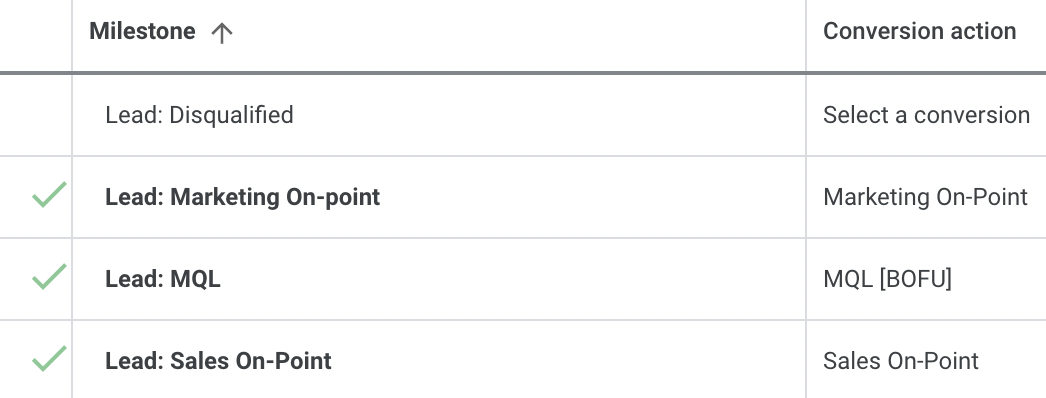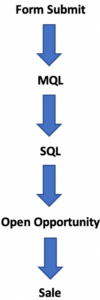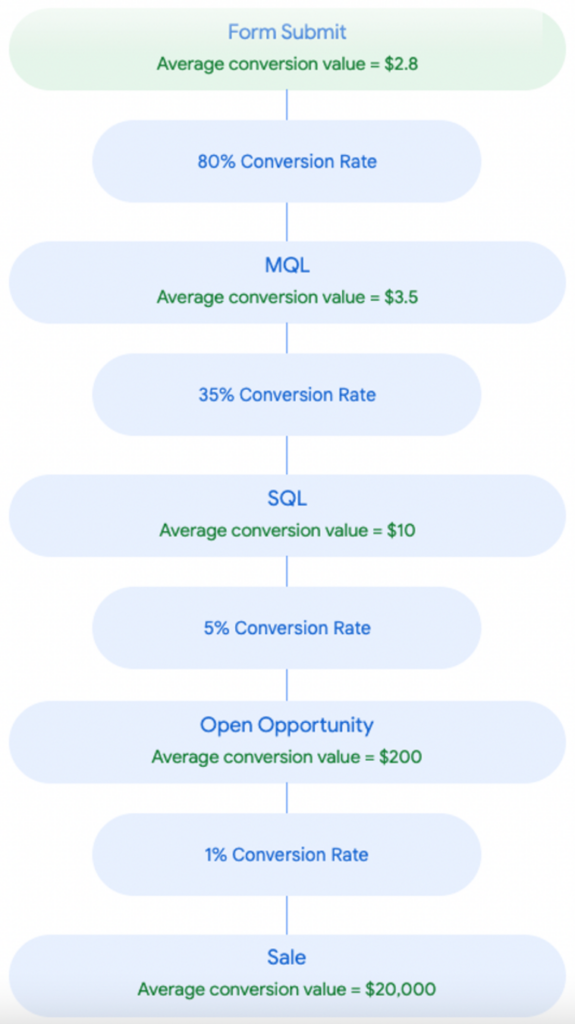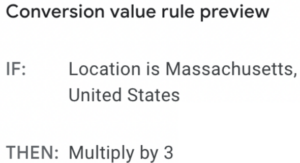It’s expected that advertisers will set up Google Ads conversion tracking. Unfortunately, the expectation for offline conversion tracking (OCT) and value-based bidding is lower. Placing conversion pixels when actions like form submissions are complete only tells part of the story.
What happens to these conversions once they get in the company’s hands? Do these leads turn into customers with associated revenue values? Understanding the value of these conversions and making optimization decisions based on backend data takes your account to the next level. The goal should be to give Google multiple OCT events with values unique to each campaign’s objective so you can bid to a target ROAS.
The primary way to track offline conversions is through the Google click ID (GCLID). This ID is appended to every ad click and associated with the lead. By making changes to the website code, the GLID is captured on the back end. When that lead converts offline, the GCLID is sent back to Google. For example, a person clicks an ad and fills out a contact us form. Ten days later that person becomes a customer. The GCLID that is sent back to Google will include the offline conversion action (let’s call it “sale”) and the value (revenue) associated with the conversion. The sale is associated with the applicable campaign, ad group, keyword, and ad.
OCT uploads can be automated or done manually. There are four ways to import offline conversions, including:
Here is an example of a Salesforce import:

The conversion actions of “Marketing On-Point,” “MQL [BOFU],” and “Sales On-Point” are all imported back to Google.
Enhanced conversions for leads are another way to pipe offline data back to Google. Lead forms or CRMs don’t need to be modified. Instead, you identify a variable such as an email or phone number that uniquely identifies the lead. Through adjustments to the global site tag or Google Tag Manager, this first-party data will be sent back to Google.
Your PPC efforts should be judged by how many customers the program generates. The act of users filling out a form is only the first step. In many cases, performance is evaluated after this step is complete. For example, an advertiser who spends $10K and garners 100 leads has a cost per lead of $100. This figure tells me how much I’m paying per website lead, but it doesn’t tell me:
Without the answers to these questions, we’re optimizing the account based on incomplete data. We also don’t know what the actual return is from the program without offline conversion data.
The goal is to use offline conversion data in your bid strategies. The data below shows the performance when using a maximize conversions bid strategy. The first strategy optimizes toward all conversions, while the second strategy is only for MQLs.

The maximize conversions bid strategy optimizing for all conversions performs better. We see 60 more conversions at a cost per conversion of $150 less than the strategy optimizing for MQLs. At face value, these figures look great.
Let’s take a closer look at how many MQLs each strategy generated.

This data paints a different and better picture. Optimizing for MQLs has generated 20 more of this action at one-third the cost. Total conversions are higher when optimizing for all conversions, but we receive more of the type of leads we care about when optimizing for MQLs. If we only take action from the first chart and continue optimizing for all conversions, we’re leaving MQLs at a better cost on the table.
For advertisers concerned about making the switch to optimize for offline conversion data, running an experiment is an excellent first step. The original campaign can continue to optimize for all conversions, while the trial campaign can optimize toward the offline conversion(s). When you review the data, you’ll need to segment your conversions by conversion action to see what type of conversions are coming through. The trial will likely see fewer overall conversions than the control. The experiment is working as long as the trial sees more offline conversions at a more efficient cost than the control.
In e-commerce accounts, giving conversions dynamic values is necessary to calculate the return on ad spend. Though this thinking should apply to lead gen accounts, it often is not. All online and offline conversions should have values applied to them for several reasons. The first is to prioritize each conversion for your bid strategies. If you are using a maximize conversion value bid strategy, you may tell the system to optimize for conversions worth $100 vs. those with a value of $20. Remember that not all conversions are created equal.

The second reason is for the target ROAS (tROAS) option. To target a specific return, you must tell the system what this number is. Without values, Google has no way of accurately hitting your goal. An MQL may be worth $200 with the return needing to be 300%. Google calculates ROAS by dividing conversion value by the ad spend. Here is what the formula and sample figures may look like to achieve the 300% return.
You could optimize toward sales, but this figure would likely decrease traffic significantly. Google recommends at least 15 conversions (with values) over the last 30 days to utilize the tROAS option. Creating conversion actions based on multiple bottom-of-the-funnel goals can be relevant. For example, you can include MQLs, SQLs and sales as a conversion action.
Google offers a great calculator to help you assign values to your conversions. To use this calculator, you need to know each step of the conversion funnel and the average dollar value of the last step (usually the sale). Here is an example lead to sale process:

In this example, the average conversion value of a sale is $20,000. When I input the expected conversion rate for each step (these are made-up figures for the purpose of this example), here is what the flow looks like.

Another way to give Google more data for the bid strategies is through conversion value rules. Using device, location, and audience, you can set adjustments for conditions that will change your values. For example, if you know that Massachusetts converters have an order value three times that of your standard “sale” conversion, you can create a rule.

The process of setting up OCT and value-based bidding isn’t hard. It takes time and forethought at the beginning, but the effort is well worth the reward. By giving Google accurate conversion data, your bid strategies will optimize toward your preferred conversions and give you the true return on your Google Ads investment.

The B2B landscape is relentless, and mediocre video production won’t cut it. Learn why scaling high-quality video production is essential to drive ROI, stand out, and stay competitive in today’s paid media game.

Misaligned metrics and fragmented strategies aren’t just inconvenient—they’re costing your marketing team revenue and results. Explore the root causes of data chaos and learn how to align your metrics for paid media success.

AI tools promise automation and efficiency, but without human expertise in creative, strategy, and oversight, they amplify inefficiencies. Learn how to balance AI’s strengths with human intervention to drive results.